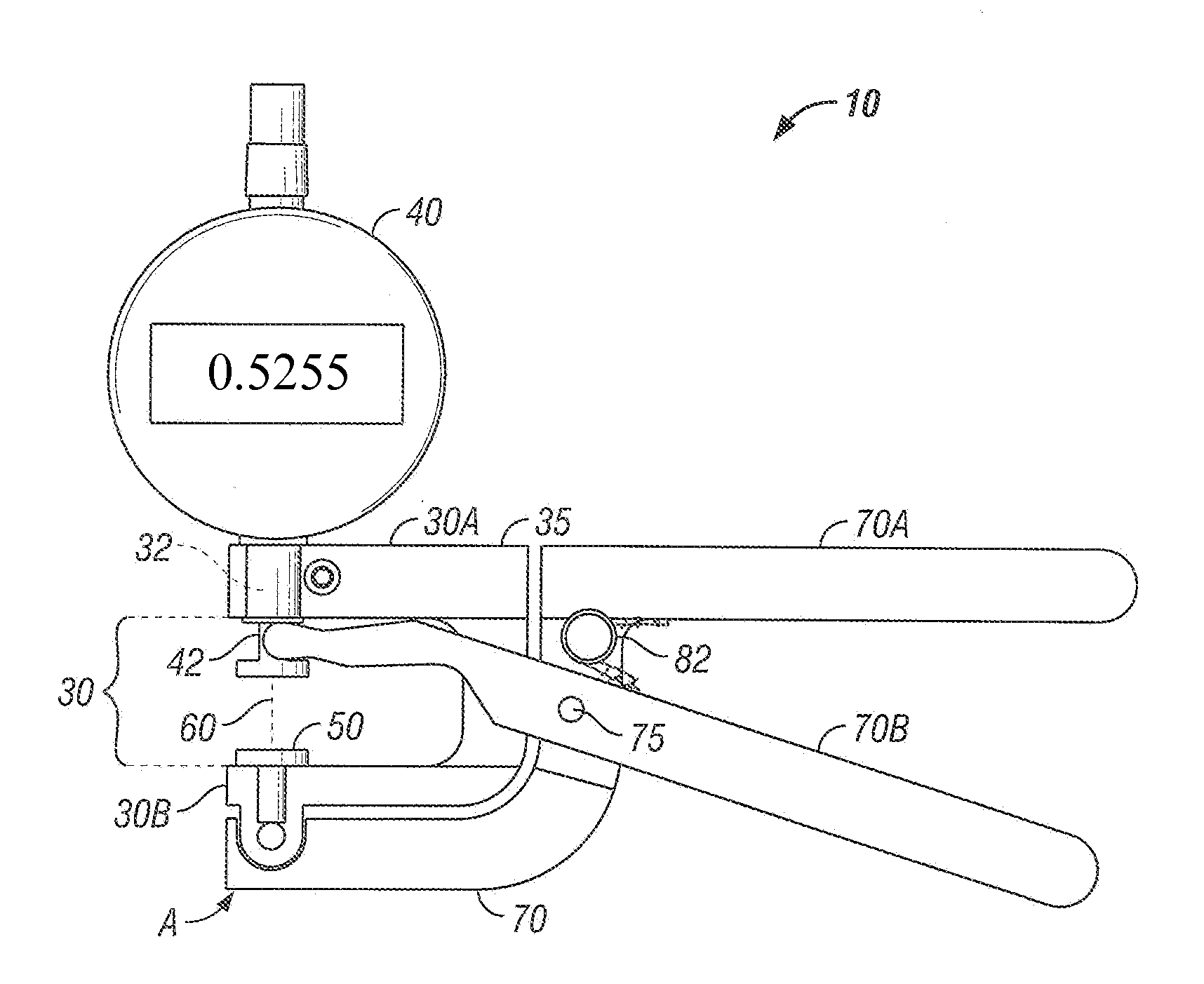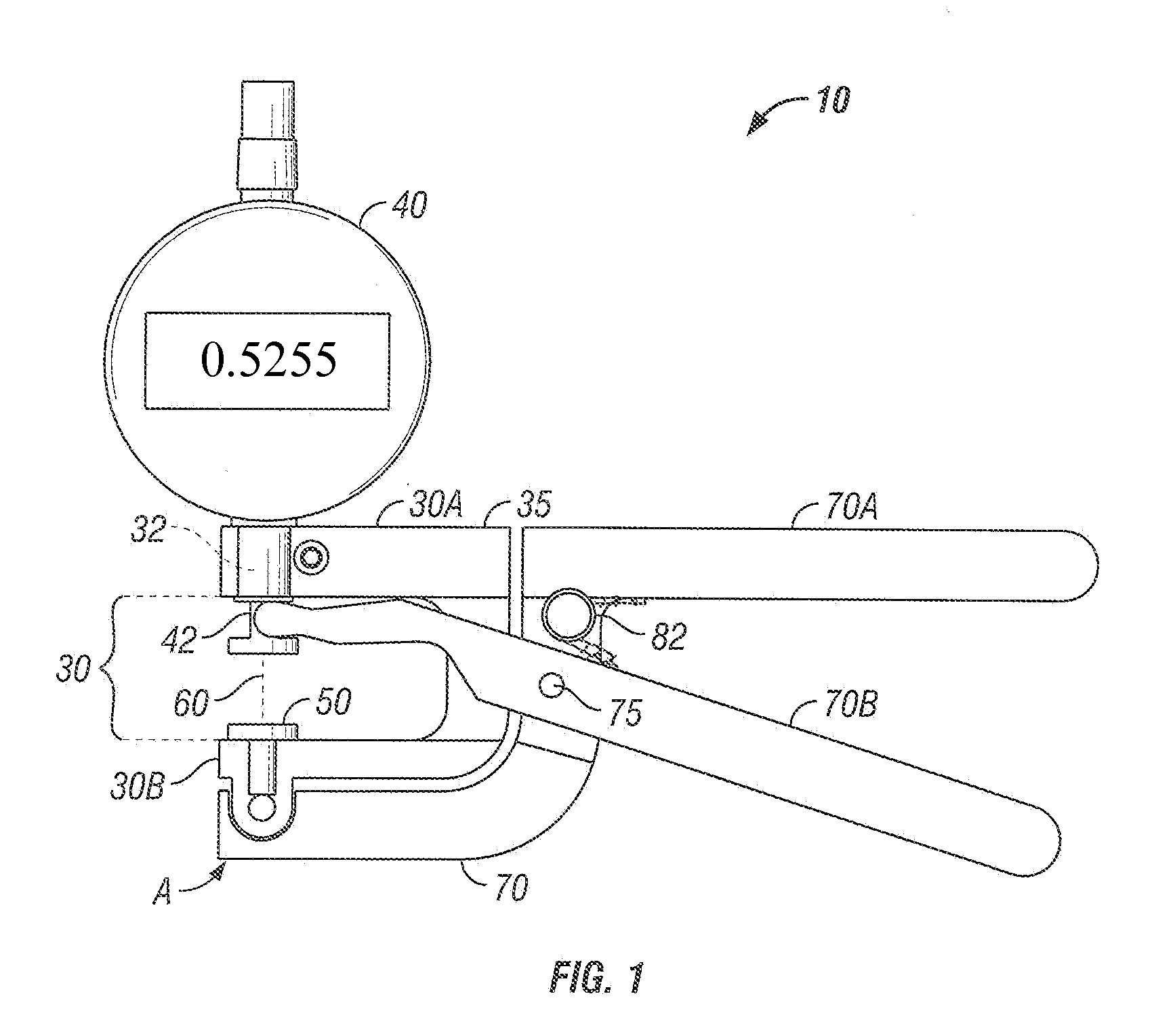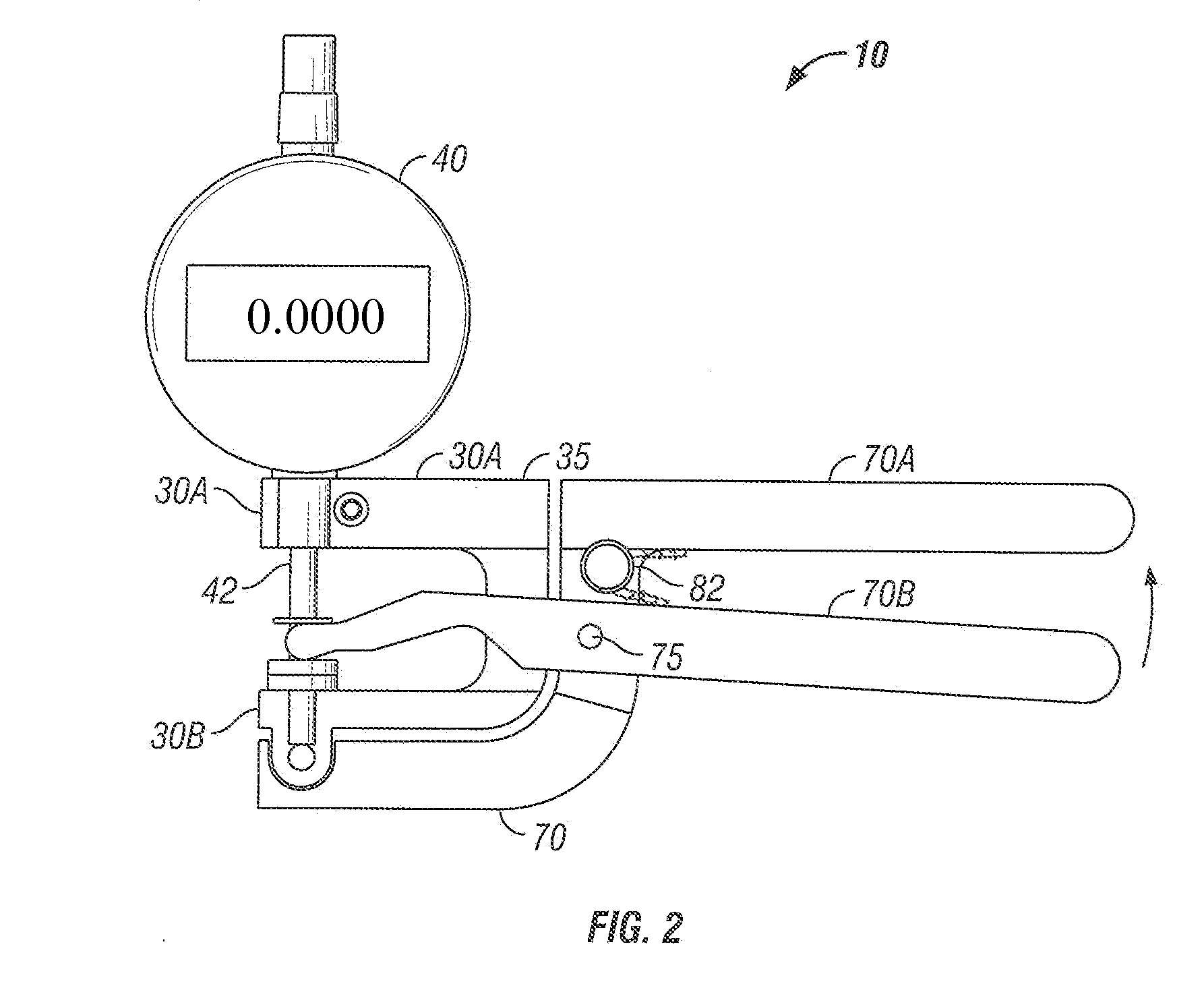Manual Thickness Measurement Gage
- Summary
- Abstract
- Description
- Claims
- Application Information
AI Technical Summary
Benefits of technology
Problems solved by technology
Method used
Image
Examples
Embodiment Construction
[0018]The figures illustrate a manual thickness measuring tool 10, the subject of this disclosure. The tool 10 is used for measuring the thickness of a sheet material workpiece 20, as shown in FIGS. 3 and 5. As shown, a top 30A and a bottom 30B jaws form a rigid C-frame 35 defining a space 30 between the jaws. A measurement gauge 40 is supported on the top jaw, and a workpiece rest 50 is supported on the bottom jaw 308. A measurement probe 42 is operationally engaged with the measurement gauge 40 wherein linear extension of the probe 42 along a line of travel 60 in the space 30 derives linear measurement by the is measurement gauge 40. The probe 42 is joined with gauge 40 through a clearance hole 32 in the top jaw 30A. The relationship between gauge 40 and probe 42 is not described here as this device is very well known in the field of calibration and measurement metrology. A handle assembly 70 is engaged with the bottom jaw 308 and this engagement is located solely at position “A” ...
PUM
 Login to View More
Login to View More Abstract
Description
Claims
Application Information
 Login to View More
Login to View More - R&D
- Intellectual Property
- Life Sciences
- Materials
- Tech Scout
- Unparalleled Data Quality
- Higher Quality Content
- 60% Fewer Hallucinations
Browse by: Latest US Patents, China's latest patents, Technical Efficacy Thesaurus, Application Domain, Technology Topic, Popular Technical Reports.
© 2025 PatSnap. All rights reserved.Legal|Privacy policy|Modern Slavery Act Transparency Statement|Sitemap|About US| Contact US: help@patsnap.com



